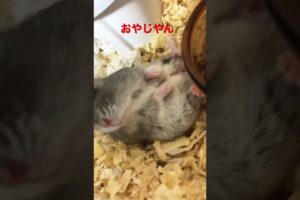Hamsters are typically stout-bodied, with tails shorter than body length, and have small, furry ears, short, stocky legs, and wide feet. They have thick, silky fur, which can be long or short, colored black, grey, honey, white, brown, yellow, red, or a mix, depending on the species. Two species of hamster belonging to the genus Phodopus, Campbell’s dwarf hamster (P. campbelli) and the Djungarian hamster (P. sungorus), and two of the genus Cricetulus, the Chinese striped hamster (C. barabensis) and the Chinese hamster (C. griseus) have a dark stripe down their heads to their tails. The species of genus Phodopus are the smallest, with bodies 5.5 to 10.5 cm (2.2 to 4.1 in) long; the largest is the European hamster (Cricetus cricetus), measuring up to 34 cm (13.4 in) long, not including a short tail of up to 6 cm (2.4 in).
The hamster tail can be difficult to see, as it is usually not very long (about 1/6 the length of the body), with the exception of the Chinese hamster, which has a tail the same length as the body. One rodent characteristic that can be highly visible in hamsters is their sharp incisors; they have an upper pair and lower pair which grow continuously throughout life, so must be regularly worn down. Hamsters are very flexible, but their bones are somewhat fragile. They are extremely susceptible to rapid temperature changes and drafts, as well as extreme heat or cold.













コメントを残す